Hill’s return to the AHL suggests that Antti Raanta is set to return from his lower-body injury on Saturday. Hill has gone 14-10-0 with a 2.41 GAA and .911 SV% with the Roadrunners this season.

Hill’s return to the AHL suggests that Antti Raanta is set to return from his lower-body injury on Saturday. Hill has gone 14-10-0 with a 2.41 GAA and .911 SV% with the Roadrunners this season.

Postma has picked up five assists in five games since joining Providence (AHL). His call-up suggests that one or both of Zdeno Chara and Torey Krug won’t be available tonight after getting hurt in Tuesday’s win in Carolina. Postma had one assist in 12 games with the Bruins earlier this season.
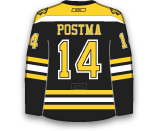
Blidh, 23, has scored nine goals with 13 assists (22 points) in 59 games with Providence (AHL) this season. His call-up likely means that Jake DeBrusk will not play on Thursday after getting hurt in Tuesday’s game.
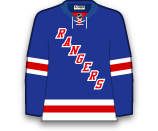
Sparks has been impressive in the AHL this season, going 24-8-1 with a 1.78 GAA and .936 SV% in 35 games with the Marlies. Sparks has been recalled to backup Curtis McElhinney tonight in Buffalo because Frederik Andersen (upper-body) was hurt yesterday.
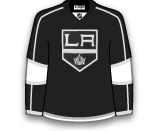
With Steve Mason already out for a couple of weeks and Michael Hutchinson leaving Tuesday’s game with an upper-body injury, Comrie comes up as the Jets’ temporary No.2 netminder. Winnipeg wants to get Hellebuyck some rest, so Comrie could see some playing time during this call-up. The 22-year-old has gone 17-11-3 with a 2.56 GAA and .918 SV% in 31 games with the Moose, but has allowed nine goals on 74 shots (.878 SV%) in two career NHL games.

Heatherington has one assist in five games with the Stars this season but has spent most of the season in Texas, where he has picked up 17 points (3G / 14A) across 52 contests. Marc Methot was hurt on Tuesday, so Julius Honka will likely draw into the lineup on Tuesday, leaving Heatherington as the Stars seventh defenseman.

Sproul has picked up 10 goals and 15 assists (25 points) in 44 games with the Wolf Pack this season. He had two assists in four games with the Rangers earlier this year and has been recalled because Anthony DeAngelo was hurt on Monday.
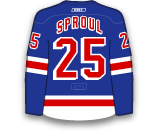
Husso was recalled to backup Jake Allen on Monday and he could be recalled again to do the same on Thursday, but that is all dependant on Carter Hutton’s health.

After Tuesday, the Lightning are off until Saturday, so Domingue heads to Syracuse where he will likely start Wednesday and maybe Friday as well. However the Lightning said they plan on carrying three goalies right now, so Domingue AHL stint will likely be short lived.

Johnsson, 23, was a seventh round pick in 2013 and could make his NHL debut on Wednesday. Johnsson has ripped up the AHL this season, leading the Marlies with 54 points (26G / 28A) in 54 games this season.
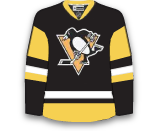
With Nikita Zaitsev battling an illness, Rosen has been summoned from the AHL, where he has picked up 17 points (1G / 16A) in 50 games. He had one assist in four games with the Maple Leafs earlier this season.

Ullmark has gone 20-11-4 with a 2.44 GAA and .923 SV% in 42 games with Rochester this season. He stopped 44 of 45 shots in a wing effort in his only start with the Sabres this season. Ullmark is the Sabres’ goalie of the future and could get a few starts down the stretch.

Husso was Jake Allen’s backup on Saturday but went down to get a start with San Antonio, where he posted a 21-save shutout on Sunday, and he returns to backup Allen tonight in Anaheim. Husso’s recall means that Carter Hutton still is not ready to go.

Budaj has been sidelined with a leg injury since December 29th, but just wrapped up a conditioning stint with Syracuse. Budaj was 0-1-1 with a 2.95 GAA and .887 SV% with the Crunch and returns to the Lightning where he was 3-3-1 with a 3.80 GAA and .878 SV% before getting hurt. Louis Domingue hasn’t been much better and the two of them will stay on the roster behind Andrei Vasilevskiy. With the trade deadline behind us, the Lightning can carry all three goalies without any issue.
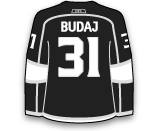
Gillies, 24, went 2-2-1 with a 2.78 GAA and .904 SV% in seven games with the Flames while Mike Smith (lower-body) was sidelined. With Smith set to return tonight, Gillies returns to Stockton where he has gone 14-12-2 with a 2.61 GAA and .915 SV% this season.

Strome, who struggled with the Coyotes earlier in the season, has been lighting up the AHL since. The 2015 third overall pick has 22 goals and 27 assists (49 points) in 44 games with the Roadrunners and will likely draw into the Coyotes lineup on Sunday. The 21-year-old has just two points (1G / 1A) in 18 career NHL games so far.

The veteran blueliner has great numbers in the AHL throughout his career, but hasn’t been able to translate it into NHL success. Butler, who has 24 points (8G / 16A) in 52 games with the Rampage this season has no points in two games with the Blues.
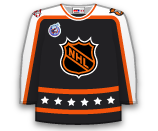
With Dmitry Kulikov out, Joe Morrow will draw into the lineup on Saturday and Poolman has been recalled to serve as an extra defenseman. Poolman has just one goal in 15 games with the Jets this year, but has picked up 10 points (1G / 9A) in 17 games with the Moose.

Sanheim, 21, has picked up one goal and 15 assists (16 points) in 18 games with the Phantoms this season. Today he will play his first NHL game since January 13th and comes up with five points (1G / 4A) and a minus-10 rating in 35 NHL games.

Bailey, who has 10 points (6G / 4A) in 27 games with Rochester this season will replace Kyle Okposo (concussion) in the lineup on Saturday. Bailey has seven points (4G / 3A) in 47 career NHL games with the Sabres.
